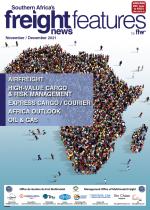Fa ster turnaround times and optimised service levels are making the difference in the airfreight sector.According to Jacques Viljoen, sales and servicing executive at Groupair, this comes on the back of the ongoing challenges around shortage of space and equipment in the airfreight market, especially from an export point of view.“Most airlines are still not operating to South Africa at their previous schedule (prior to Covid-19) and are, in fact, f lying reduced f lights to South Africa. The airlines are slowly returning and will thus allow more access to capacity. This is, however, a long-term plan and it’s taking time to return to normal,” he told Freight News.“This has seen us having to develop a new level of service to meet all of our clients’ demands.”A variety of new measures had been put in place, said Viljoen, and these were proving to be successful. “Due to the shortage of equipment and congested ports impacting ocean freight, opportunities have opened up to move goods via air. Cargo that would usually be on sea is now moving to airfreight.”He said another interesting trend was that due to the longer ocean freight transit times, deadlines were being missed. “Damage control is applied in the supply chain and this, in turn, has allowed for increased movement by airfreight.”Viljoen said South Africa’s top five airfreight export destinations were China, the United States, Germany, the United Kingdom and Japan.“Our outlook for the airfreight sector is fairly positive. We are expecting the current trend to continue, where more airfreight shipments are being sent than ocean freight. The large delay with ocean freight is forcing the supply chain to look at alternative solutions.”He said deadlines still had to be met. This trend was expected to continue until at least the middle of 2022.

